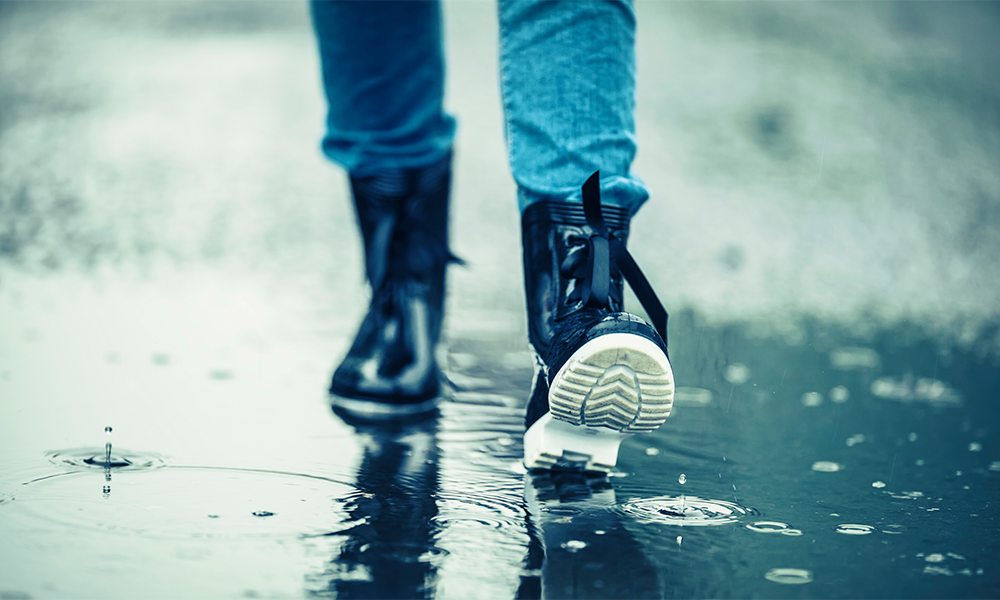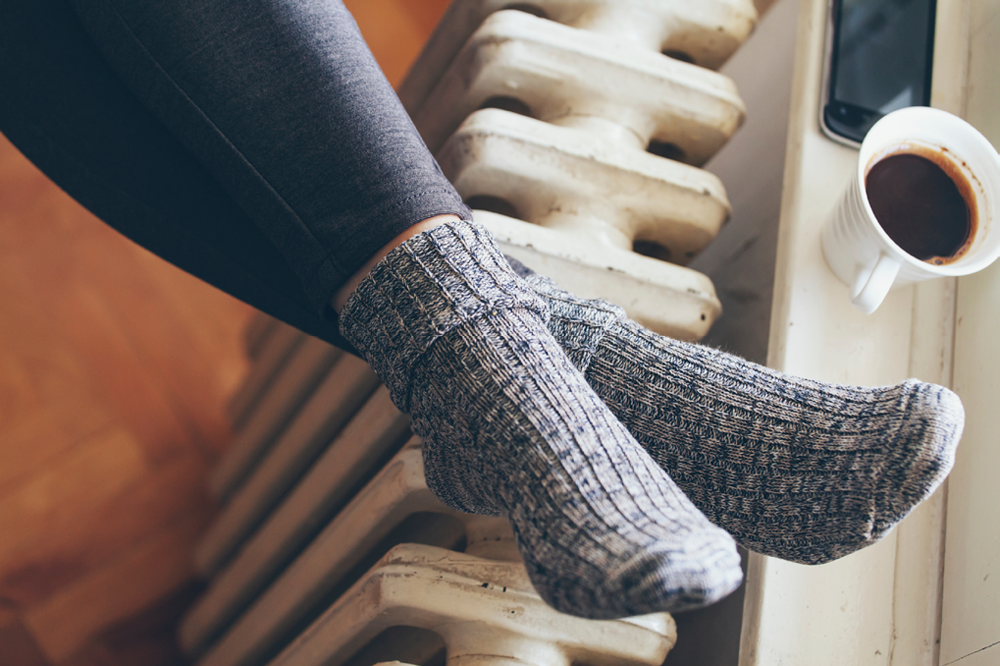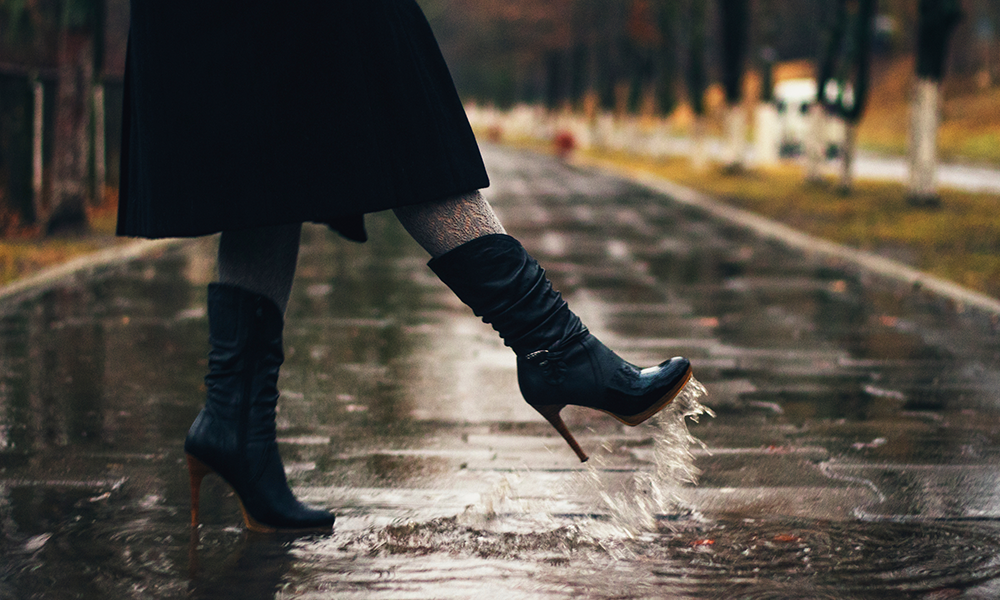Grabbing a pumpkin spice latte is probably the first item on your “OMG, It’s Fall!” list, and buying a great pair of fall boots is probably second. There are many options for number three (apple picking, cozying up by the fireplace, and noshing on pumpkin everything, to name a few), but learning how to protect and waterproof boots should probably take the cake. So grab that PSL and get to reading these best ways to start waterproofing shoes — before a sudden sprinkle rains on your beautiful fall boot parade!
Waterproofing Shoes And Boots: Your Ultimate Guide

1. Apply A Waterproof Spray For Shoes
While you’re out picking up your latest pair of riding boots, thigh-highs or booties, be sure to also grab a bottle of waterproof spray or soap. Miracle products like RustOleum NeverWet Spray deliver super hydrophobic protection from any type of wetness — rain and snow included. Just be sure that whatever waterproofing spray you use is shoe-safe and also safe for the material your boots are made out of (leather, suede, canvas, etc). And you should probably do a test spray on a small, inconspicuous part of the boot to make sure the spray doesn’t cause discoloration.
Application frequency of waterproofing sprays depends on the climate in which you live. For mild autumn and winter seasons, two sprays per year should do the trick. For areas with heavy rain and snow, you’ll want to consider monthly or even bi-weekly application.
Note: Some shoe experts warn that because waterproofing sprays are not meant to penetrate leather and instead form a protective topcoat, they can actually hinder nourishing shoe polishes from doing their job and eventually dry out the material. If you’re concerned about this happening, skip this step and check out #2, instead.
2. Use Preventatives Like Oils, Waxes and Polishes
Some materials benefit more from oils, waxes, rubs and polishes that not only hydrate the boot and keep them supple, but also create a protective layer between the boot and whatever water they come into contact with. Examples include leather and other animal skin materials. Bonus: These products also help keep the material in tact and prevent damage, fading and loosening.
As with waterproofing spray, application depends on the weather conditions of where you live. Most shoe experts recommend weekly polishing to extend the life of your boots for years to come, and daily polishing if you expose your boots to particularly wet weather on a frequent basis.
RELATED: 8 Healthy Reasons To Walk In The Rain
3. Clean Salt Stains As Soon As Possible
There’s practically no realistic way to avoid salt stains if you live in an area where salt is used on icy, snowy sidewalks. You’ll want to remove the stains immediately to prevent permanent discoloration and damage. To do this, either follow your boot manufacturer’s cleaning instructions or use a damp, warm cloth to clean the stain.
If the salt stain is set in, you can try a salt-stain removing product or whip up a DIY treatment of equal parts vinegar and water to help clean the salt away from most materials. For salt stains on suede, you’ll want to try using an emery board or very fine sand paper to help buff the stains from the material.

4. Dry Your Boots After Water Exposure
It might sound obvious, but you’d be surprised how many people skip the step of drying their boots — or they dry their boots in ways that cause damage to the shoes.
Never place boots close to a fire or open heat source. The intense warmth may dry up moisture, but it can also quickly dry out your boot material and lead to cracking. Instead, try using a commercial boot dryer, hanging your boots upside down with pant hangers or keeping them fully upright with boot shapers, rolled up magazines or newspapers stuffed inside.
RELATED: How To Use Magazines To Shape And Protect Your Boots
5. Understand That Not All Boots Can Be Fully Protected
Waterproofing sprays can deliver miracles, but that doesn’t mean they’ll save each and every pair of boots. Shoes that are made out of suede, for example, can actually weaken over time with continuous waterproof spray usage. In addition, the salt used to clear ice and snow from sidewalks can affect the color of the fabric. Waterproofing sprays can help prevent this, but it’s still a good idea to avoid wearing suede on super damp days.
6. Understand That Full Waterproofing Isn’t Possible
Unless you buy shoes that are specifically designed to be waterproof, you’ll never achieve full waterproofing with sprays, waxes and other products. So follow the above steps with the idea that you’ll achieve water resistance in the worst of cases, waterproofing in the best.


